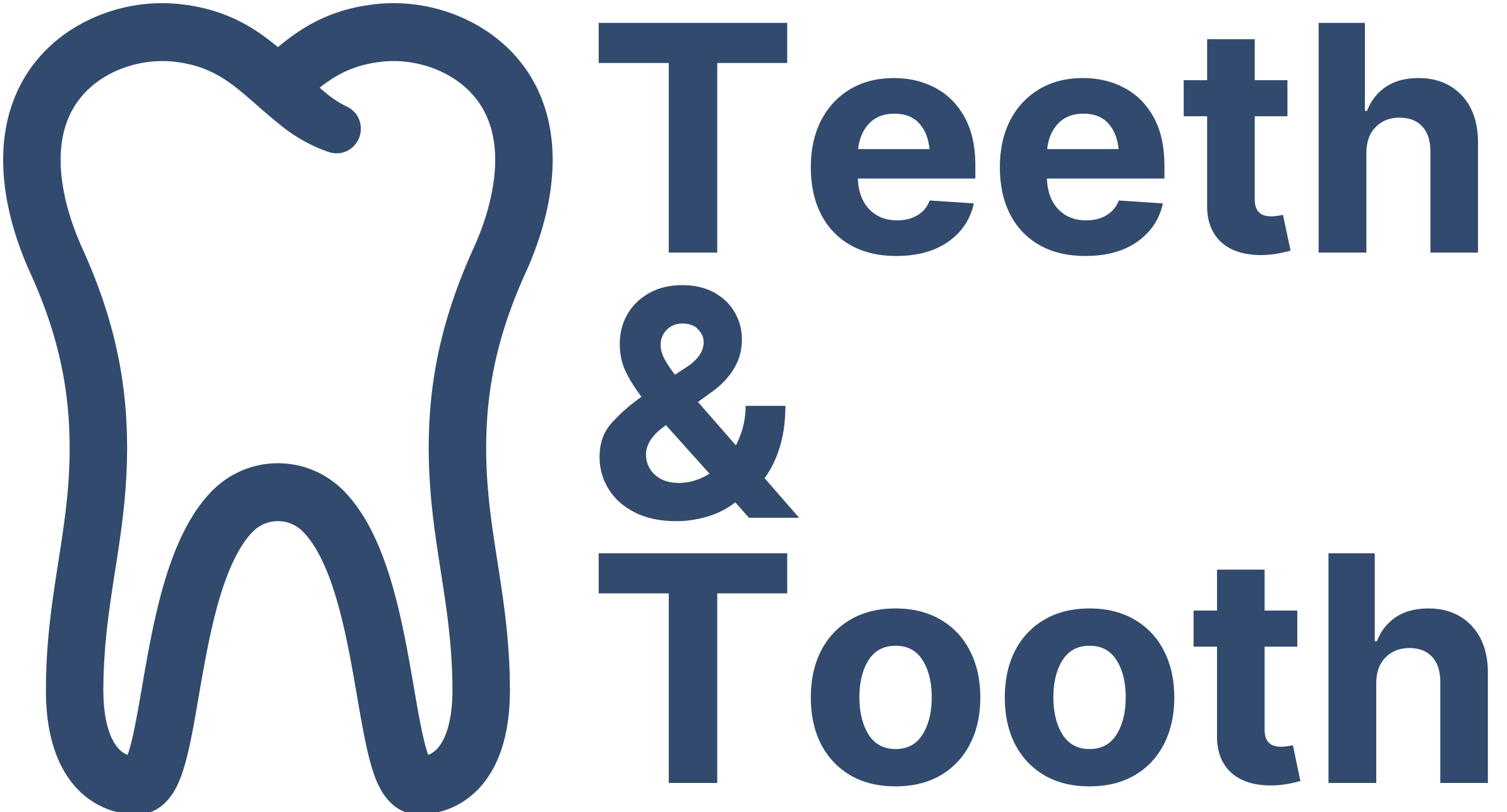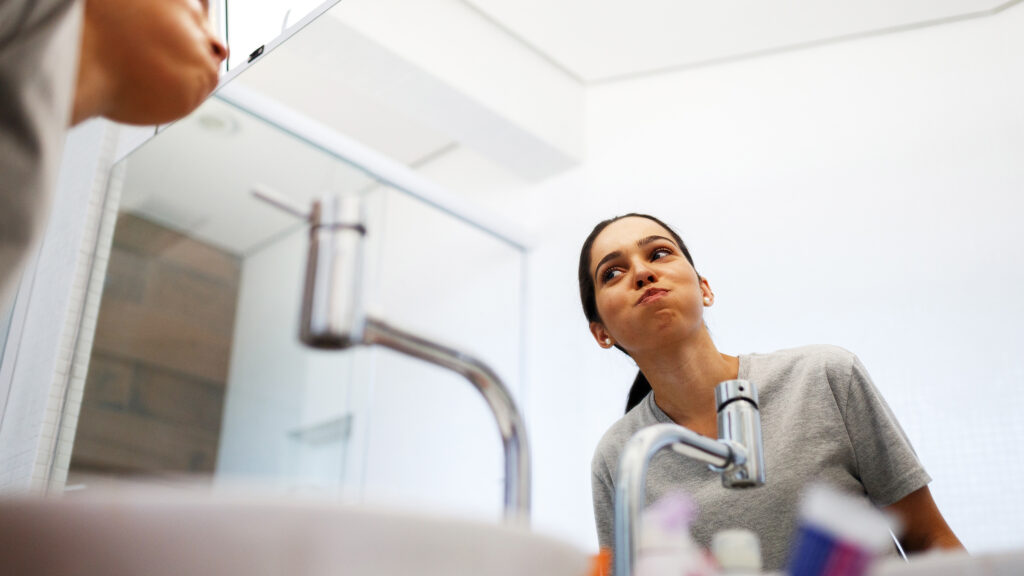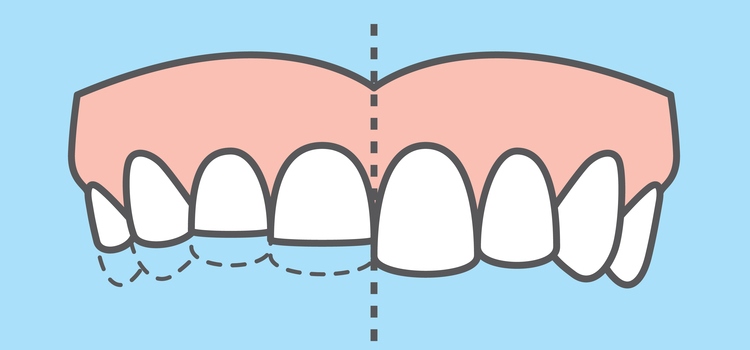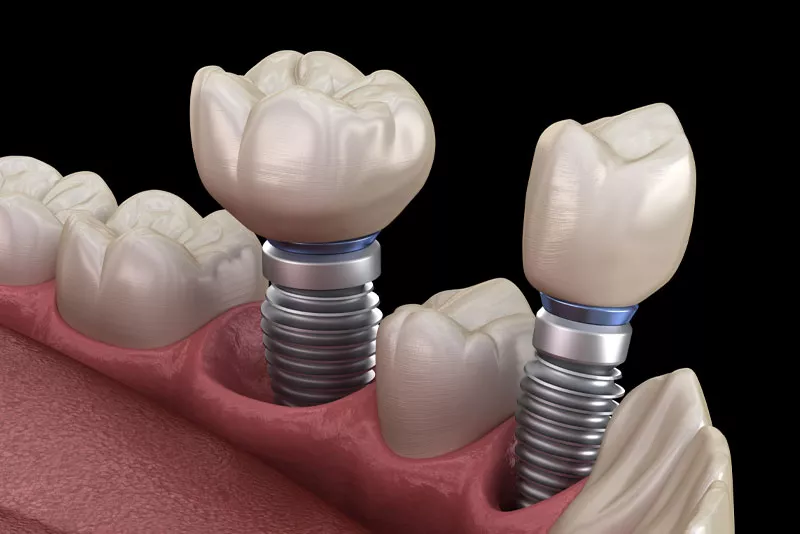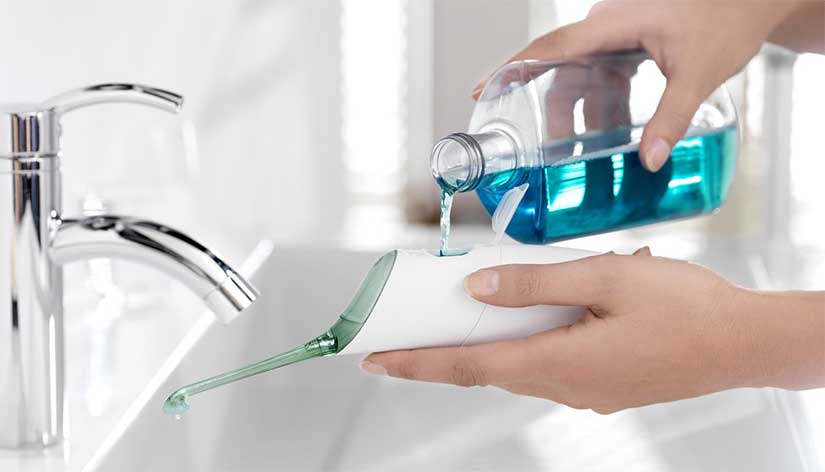
Keeping your teeth and gums healthy is essential for maintaining good oral hygiene and preventing dental problems. Brushing your teeth twice a day is essential, but sometimes, it may not be enough to remove all the plaque and debris between your teeth and along the gumline. That’s where a water flosser can come in handy.
Water flosser is a great complement to your daily brushing and flossing routine as it is highly effective in removing any food particles that may be stuck between your teeth. While only water is required for an effective water flossing, can you put actually mouthwash in it?
The answer is YES, you can use mouthwash in your Waterpik water flosser. In fact, the habit is recommended by dentists due to the health benefits of mouthwash. That said, there is currently no clinical study or scientific research to support the any claim that the use of mouthwash in your water flosser will provide any additional benefits beyond the use of warm water.
What is a Water Flosser?
Water flosser, or oral irrigator, is a dental device that jets out water to dislodge food particles that are stuck between your teeth. Water flossers typically consist of a motor with a pump, a water reservoir, and a specialized nozzle or tip that directs the water jet. When the device is turned on, the motor powers the pump, which forces pressurized water through the nozzle at high pressure.
The user then directs the water stream between their teeth and along the gumline, effectively dislodging debris and cleaning these areas.
A water flosser helps to removes plaque and prevents tartar, a brown colored deposit that forms when plaque hardens, from forming on the teeth. According to American Dental Association (ADA), water flossers that have received the ADA Seal of Acceptance are all proven to have shown efficacy in removing plaque from the teeth.
Plaque is a sticky film made up of millions of bacteria. These bacteria feeds on any leftover food particles in the mouth and produces acid which over time, destroys the tooth enamel and leads to periodontal diseases such as gingivitis and periodontitis.
There are generally three types of water flosser:
- Countertop. This is the most common and heaviest of the three. It offers a larger water reservoir, more pressure settings, and more advanced features, making a favourite among those who uses a water flosser at home.
- Cordless. A cordless (also known as travel) water flosser is essentially a miniature version of its countertop counterpart. However, it has a smaller water reservoir, less settings and a lower water pressure.
- Shower/Faucet: This style of water flosser is attached directly to your sink and shower and does not require any electricity. While it offers much less feature and control over the water pressure, it does not require a water reservoir.
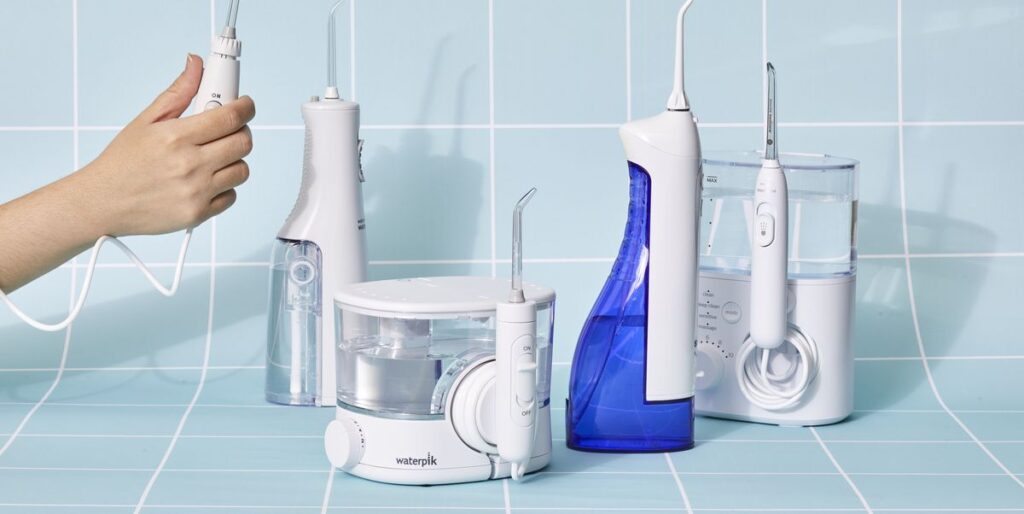
Water flossers have gained popularity in recent years due to their ease of use, especially for people with dental appliances, such as braces or dental bridges, and those with dexterity issues or sensitive gums. While water flosser should not replace your toothbrush, it serves as a great alternative to traditional flossing.
You may be interested in: Does Mouthwash Stain Clothes?
In fact, a 2013 clinical study found out that the group that used water flosser was 29% more effective than the waxed string floss group at removing plaque from the surface of the tooth. This is likely due to the ease of using a water flosser as compared to a string floss; the latter requires skills to identify areas where plaque still lingers as well as the dexterity to utilize the string floss.
Today, there are numeral brands of water flosser ranging from Colgate, Oral-B, Philips, to Phillips. However, Waterpik remains the most popular brand of water flosser.
How to Use Mouthwash in a Waterpik?
Using mouthwash in a Waterpik or any other water flosser can enhance your oral care routine by adding the benefits of an antimicrobial or fluoride rinse to your flossing experience. Here are the steps that you should take when using mouthwash in your Waterpik water flosser:
- Fill up the water flosser reservoir with warm water. If desired, you can use warm water for added comfort.
- Select a mouthwash that meets your specific oral care needs such as antimicrobial rinse or a fluoride rinse. Some water flosser manufacturers may recommend only using their branded products or advise against using certain types of mouthwashes.
- Add your mouthwash to the reservoir. The preferred mixture is 1 part mouthwash to three parts water, but you may adjust this according to your preference. Ensure that you do not exceed the ratio of one unit of mouthwash per unit of water
- Carry out your water floss routine as per normal. Move the tip around your mouth methodically, spending a few seconds on each area, until you have cleaned all of your teeth and gums.
- After your routine, clean the unit by filling up the reservoir with warm water. Rinse the inside of the nozzle by pointing the tip into the sink
There are many who believes that mouthwash should not be put in a water flosser as the mixture could potentially damage the water flosser. This is partially true, as a high concentration of mouthwash can ruin the plastic parts of the device. There are several other things you need to take note of when adding a non-water solution to your water flosser:
- Avoid exceeding the 1:1 ratio of mouthwash to water.
- Avoid adding essential oils (such as eucalyptus oil, tea tree oil, or spearmint oil)
- Avoid adding bleach or a diluted bleach solution.
- Avoid adding iodine or a diluted iodine solution.
- Avoid adding salt or a saline solution.
- Always rinse the machine (including the water reservoir and the nozzle) after using a solution other than water.
Ignoring any of the above warning may dramatically reduce the performance and lifespan of your Waterpik water flosser. Also, be aware that the addition of any additives into your water flosser may void the warranty of the product.
Recommended Mouthwash for Water Flosser
When selecting a mouthwash to use with your water flosser, it’s essential to choose one that is both compatible with your device and tailored to your oral health needs. Here are some general guidelines and recommendations to help you choose the right mouthwash for your water flosser:
- Fluoride: If you’re looking to enhance your cavity protection, consider a mouthwash that contains fluoride. Fluoride helps strengthen your tooth enamel and can help reduce the risk of tooth decay.
- Antimicrobial: For individuals with gum issues or a history of periodontal disease, an antimicrobial mouthwash can be beneficial. Look for a mouthwash containing ingredients like chlorhexidine, cetylpyridinium chloride, or essential oils, which are known for their antimicrobial properties.
- Non-alcoholic: Alcoholic mouthwashes can cause damage to the components of your water flosser, so it’s best to opt for a non-alcoholic formula. Non-alcoholic mouthwashes also have the advantage of not causing a burning sensation or dryness in your mouth.
Here are a list of mouthwash products that are recommended by dentists and are safe for use in most water flosser devices in the market:
- Listerine Freshburst Antiseptic Mouthwash
- TheraBreath Fresh Breath Dentist Formulated Oral Rinse
- Tom’s of Maine Natural Wicked Fresh! Alcohol-Free Mouthwash
- Crest Pro Health Multi-Protection Mouthwash
- Colgate Total Pro-Shield Alcohol Free Mouthwash
Always remember to dilute the mouthwash with water, as recommended by the water flosser manufacturer, before using it in your device. And as with any oral care product, consult with your dentist or dental hygienist to discuss which mouthwash is best suited for your unique oral health needs.
Takeaway
To conclude, it is safe to include a small volume of mouthwash into your Waterpik water flosser. However, the effectiveness of using a mouthwash over warm water is still to be debated and researched on. Furthermore, the benefits of a water flosser comes down to how experienced an individual is with the device.
It is also recommended to consult with your dentist to determine the best mouthwash for you, as they will take into account your individual oral health needs and any specific oral health conditions you may have.
